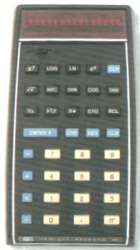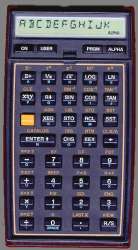 | Hewlett-Packard History |
|
William R Hewlett (born 1913) and David Packard (1912-1996) were electronics engineers and on 1st January 1939 they formed Hewlett-Packard in Palo Alto, California, to make audio amplifiers for testing sound equipment. The business was gradually extended to include medical equipment, laboratory instruments, and later calculators and computers. By the late 1990s Hewlett-Packard ('HP') sold over 20,000 different products. HP really entered the digital electronics field in 1972 when they launched the HP-9830A desktop computer. Costing $6000 this was a large self-contained unit including keyboard, printer and one line red LED display, and could be programmed in BASIC. Steve Wozniak joined Hewlett-Packard in 1973 and in 1976 suggested that they should build a personal computer. His idea was rejected and later that year he left to co-found Apple Computers.
HP made a number of desktop and portable computers in the 1980s (see the HP-75 and HP Integral) but recently have concentrated on Wintel PCs, plus the iPAQ Personal Digital Assistant following the merger between Hewlett-Packard and Compaq. HP has also maintained its traditional scientific equipment sector and is now a very large company. In 1996 its sales totalled $38.4 billion, more than twice the total for Microsoft. |
 In the same year they produced the HP-35 (right), the world's first pocket calculator with scientific functions (sin, log etc.)
In the same year they produced the HP-35 (right), the world's first pocket calculator with scientific functions (sin, log etc.) Hewlett-Packard continued to lead the field in top-of-the-range calculators, which were all noted for their excellent construction quality (and high price). The advanced programmable HP-41C (right) of 1979 introduced an alphanumeric display and keyboard to calculators, bringing calculators to almost the level of pocket computers.
Hewlett-Packard continued to lead the field in top-of-the-range calculators, which were all noted for their excellent construction quality (and high price). The advanced programmable HP-41C (right) of 1979 introduced an alphanumeric display and keyboard to calculators, bringing calculators to almost the level of pocket computers.